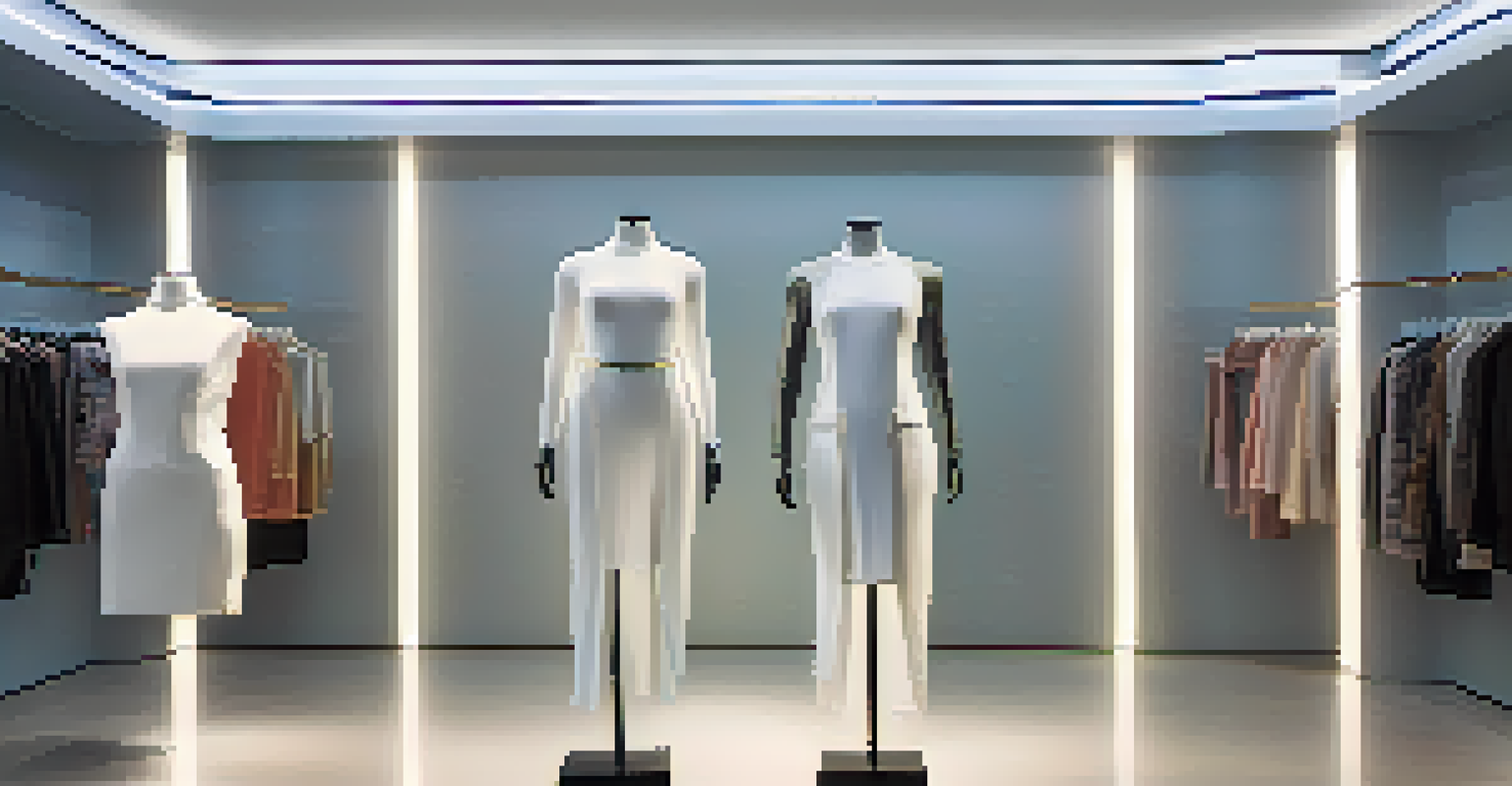The Role of AI in Designing Fashionable Wearable Technology

Understanding Wearable Technology in Fashion
Wearable technology has evolved from simple fitness trackers to stylish accessories that enhance our daily lives. These devices, such as smartwatches and fitness bands, seamlessly blend functionality with fashion. The challenge lies in designing wearables that not only perform well but also look good on the user.
Wearable technology is not just about function; it's about creating a connection between the user and the device, blending style with technology.
As consumers become more fashion-conscious, the demand for aesthetically pleasing wearable tech has surged. Designers face the task of integrating advanced technology into garments and accessories without compromising style. This is where artificial intelligence (AI) plays a pivotal role.
AI helps designers analyze trends, consumer preferences, and even the ergonomics of wearables. By harnessing data, designers can create pieces that are not only functional but also resonate with the fashion-forward consumer.
AI and Trend Prediction in Fashion Design
One of the standout contributions of AI in fashion is its ability to predict trends. Machine learning algorithms analyze vast amounts of data from social media, fashion shows, and retail sales to identify emerging styles. This insight allows designers to stay ahead of the curve and create wearables that appeal to current tastes.

For instance, AI can detect patterns in color, fabric, and design elements that are gaining popularity. This information enables brands to tailor their products to meet consumer demand, ensuring that their wearables are not just functional but also trendy.
AI Drives Trend Prediction in Fashion
Machine learning algorithms analyze data to help designers identify and create wearables that align with emerging fashion trends.
Moreover, AI can forecast future trends based on historical data, helping brands strategize their collections effectively. This predictive capability empowers designers to create pieces that are both innovative and commercially viable.
Personalization Through AI in Wearable Tech
Personalization is becoming increasingly important in the world of fashion, and AI is at the forefront of this movement. With AI algorithms, brands can create customized wearable technology that caters to individual preferences and needs. This aspect of personalization enhances user experience and fosters brand loyalty.
The future of fashion lies in the fusion of technology and aesthetics, where innovation meets personal expression.
For example, AI can analyze data from users' interactions with their devices, learning their preferences over time. This information allows brands to curate recommendations, ensuring that wearables are not only stylish but also tailored to the user's lifestyle.
Additionally, augmented reality (AR) features powered by AI can allow consumers to visualize how a wearable will look on them before making a purchase. This interactive experience not only boosts consumer confidence but also increases the likelihood of a sale.
Sustainability in Wearable Tech Design with AI
Sustainability is a critical concern in the fashion industry, and AI is proving to be a valuable ally in addressing this challenge. With the ability to analyze supply chains and material usage, AI helps designers create eco-friendly wearables. This not only minimizes waste but also encourages the use of sustainable materials.
AI-driven tools can simulate the environmental impact of different design choices, allowing brands to make informed decisions. For instance, by optimizing patterns and reducing fabric waste, designers can create stylish wearables that are also environmentally responsible.
Personalized Wearables Enhance User Loyalty
AI enables brands to customize wearable technology, tailoring products to individual preferences and improving user experience.
Moreover, AI can aid in recycling efforts by identifying materials that can be reused in wearable technology. This innovation paves the way for a circular fashion model, where products are designed with their lifecycle in mind.
AI-Enhanced Functionality in Wearables
The functionality of wearable technology is paramount, and AI significantly enhances this aspect. From health monitoring to fitness tracking, AI algorithms analyze user data to provide personalized insights and recommendations. This level of functionality transforms wearables into essential lifestyle companions.
For example, smartwatches equipped with AI can track heart rates, sleep patterns, and even stress levels, offering users valuable health insights. This data-driven approach empowers individuals to take control of their wellness while also keeping them stylish.
Furthermore, AI can enable wearables to adapt to changing environments or user behaviors. For instance, smart clothing can adjust its temperature based on the wearer’s body heat, merging comfort with cutting-edge technology.
User Experience and Interaction with AI Wearables
User experience is at the heart of wearable technology design, and AI enriches this experience in numerous ways. Through natural language processing and machine learning, AI can facilitate seamless interactions between users and their devices. This creates a more intuitive and engaging experience for users.
Voice-activated features, for example, allow users to control their wearables hands-free, making them more functional in everyday situations. This level of interaction not only enhances usability but also aligns with the on-the-go lifestyles of modern consumers.
Sustainable Practices Through AI Insights
AI assists in analyzing supply chains to promote eco-friendly design choices, minimizing waste and encouraging sustainable materials.
Moreover, AI can learn from users’ behaviors and preferences, continuously improving the interaction over time. This adaptive capability ensures that wearables remain relevant and useful, fostering a deeper connection between the user and the technology.
The Future of AI in Fashionable Wearable Technology
As we look to the future, the role of AI in designing fashionable wearable technology is set to expand even further. Innovations in AI and machine learning will likely lead to even smarter and more stylish devices. The convergence of fashion and technology will create opportunities for new designs and functionalities that we can only begin to imagine.
With advancements in materials science, we may see the emergence of fabrics that integrate AI capabilities directly into the textile. This could revolutionize how wearables are designed, allowing for even more personalized and interactive experiences.

Ultimately, the synergy between AI and fashion is paving the way for a new era of wearable technology that not only meets the demands of consumers but also reflects their individuality and lifestyle choices.